Volume 7, Issue 1, November 2017
CARL THERRIEN & ISABELLE LEFEBVRE
Université de Montréal
Abstract
This article introduces an analytical tool developed to study the content and historical trends of printed ads, a “blind spot” of current studies on the formation of game culture by video game magazines. Focusing on video game advertising, the paper argues that by encouraging specific expectations about future gaming experiences, the marketing discourse exerts an influence on how players interpret, discuss, and interact with video games, as well as suggesting the target audience for said games. The goal of this article is to present the conceptual frames and to highlight their relevance in contemporary game studies. These were segmented into diegetic, experiential and historical frames, as well as demographics, in order to monitor the prevalence of certain addresses (both visual and textual) throughout the magazines’ history.
Keywords: History of games ; Marketing discourse ; Printed ads ; Content analysis
Advertising signs tell us about objects, but don’t explain them with regards to a praxis (or very little): in fact, they refer to the real objects as to an absent world. They are literally “legend”, that is to say they are there first and foremost to be read (Baudrillard, 1968:246)[1]
Introduction
In a recent contribution, Graeme Kirkpatrick presents a convincing study about the formation of gaming culture (2015). According to the scholar, this culture developed in the early 1980s thanks in part to the rise of dedicated magazines, where a newfound expertise in game appreciation could manifest itself. Interaction between journalists and readers led to refinements in the way of perceiving video games; one of the strong statements of the book is that the press played a major role to format the way we think about and engage with games. As Kirkpatrick states (building from a bourdieusian background):
The new perception is located in a set of embodied dispositions that people learn and on which basis they are able to come to grips (literally) with gaming practices. This, the formation of gamer habitus, is rendered intelligible through the development of ways of talking that are specific to gaming and come to be associated with the identity, ‘gamer’. (2015:7)
Although Kirkpatrick’s inspection of the press does occasionally consider the printed advertisements that proliferated in these magazines, his account focuses mostly on the journalistic features such as interviews and game reviews, where specific terminology and frames of appreciation were refined by the community. In this paper, we seek to focus on a “blind spot” of the discursive expertise that proliferated in games magazines, one that had a direct influence on the way gamers talk about games, and on the legends that are built along the way: the printed ad. While this “feature” of the specialized video game press has not received a lot of dedicated attention in academic literature up to now, the valuable contributions that have emerged recently (along with a few classic studies of marketing) provide a steady foundation to further develop our understanding of the phenomenon and its interaction with game culture. It might appear difficult and paradoxical to associate marketing with something that can be as edifying as the practice of journalism and cultural appreciation, yet we must be reminded that both coexisted and interacted in the specialized press, and in the readers’ mind.
Printed ads may have been peripheral in many magazines at first, but their influence on the way the community frames and talks about games has been monumental. Elaborate discursive strategies were built from a mixture of classic stylistic figures and fragments of the gaming world. Hyperbolic constructions may highlight seductive content, the addictive quality of the game or the idea of technological supersession through a reworking of the classic “old vs. new” mindset. These conceptual frames can be expressed both textually and visually. As the ads proliferated and monopolized more and more of the printed pages, specific frames have spread in the gaming community; traces of their influence can be found in the reader mail section or in journalists’ reviews. Throughout the history of games, the printed ad maintains a constant pressure on how players interpret, discuss, and interact with video games. Magazine readers are invited to take a “first step” in order to enjoy the video game experience through marketed frames that guide expectations. At the same time, as the introductory quote from Baudrillard suggests, ads can take a life on their own in the mind of the reader, and substitute for a game that will never be experienced firsthand. The repertoire of games known to the average gamer might be overly represented by this marketed image.
The main objective of this paper is to introduce a selection of marketing frames specific to the world of video game entertainment. This tool was conceived to document reoccurring formulas, both visual and textual, featured in printed ads. Ultimately, it will allow us to encode thousands of ads from many different magazines and regions of the world over the course of a few decades in order to propose a comparative historical portrait. In this article, we focus on the definition of the various conceptual frames that emerged and were refined during the initial phase of coding. Specifically, these frames and categories were constructed and selected to reflect many ongoing interests in the field of game studies, such as the place of minorities, the representation of gender, the obsession with technology, the presence of other media in the ads, etc. The following section introduces some important theoretical premises of marketing analysis, from the broad field of semiotics to the more specific domain of discursive analysis in game studies. The second part of the paper defines relevant conceptual frames to study marketing in light of sustained interest and research inquiries in the field.
1. Marketing analysis and game studies
Printed ads have been associated with the broad category of paratextual manifestations, a concept inherited from literary studies that is commonly used by game scholars working on discourse communities. The notion of paratext, as defined by Gérard Genette, is an “heterogeneous ensemble of practices and discourses of all kinds and of all ages” (2002 [1987]: 7-8)[2] surrounding a text, that has the potential to influence or direct its reception. In that respect, the paratext constitutes an
in between text and outside-text, not only a zone of transition, but of transactions: privileged place of pragmatism and strategy, of an action on the audience at the service of […] a better reception of the text and of a more relevant reading – more relevant in the eyes of the author and his/her allies (2002 [1987]: 8).[3]
The interest of paratext lies in its power to direct or influence how users read, interpret, and talk about a given text. Although marketing has a troublesome relationship with the quality of relevance put forward by Genette, as with the idea of a truth claim in general (as we will see below with Barthes and Baudrillard), it could be analysed similarly in terms of function.
According to Genette, paratext can be broken down into two other concepts, the peritext and the epitext, whose definitions rely on spatial relationships with regards to the main text. In that respect, the peritext is directly attached to the book (as an object) – that is very close to the text – and the epitext, although it is still connected to the text, gravitates farther from it, within no considerable space-time limits (except its essential link to the text).[4] When Genette discusses advertising more specifically through the notion of editorial epitext, one can note a certain lack of interest and analytical depth. The concept is only outlined to highlight its economic function (to incite consumption), an obligatory step on which the author has no control; according to the scholar, editorial epitext “doesn’t always engage in a very significant manner the responsibility of the author, who most of the time officially overlooks the glorifying hyperboles linked to the imperatives of commerce” (2002 [1987]: 349).[5] Thus, Genette seems mostly interested in paratextual elements where the author exerts a clear intentionality or responsibility. Although this concept constitutes a good starting point, we necessarily stumble on this limitation when we try to apply it to video game marketing.
Some of the most important figures in classic semiotics have taken a keen interest in the study of advertisement, with a clear emphasis on its potential effects on users. For Roland Barthes, advertisement supposes a relationship between two messages: beyond the understanding of specific attributes or metaphors put forward (first message), the rhetorical emphasis associated with marketing becomes a signifier in itself, leading to a signified that is the universal second message in every ad: the excellence of the product (1985 [1963]:244). This connotation, Barthes observes, is so ostentatious that it is often perceived before the “first” message (the actual statement or metaphor presented in the ad). This dynamic is essential in order to seduce according to the scholar:
the first message is useful more subtly in making the second seem more natural: it removes its interested purpose, the gratuitous nature of its assertion, the stiffness of its commination; it substitutes to the trivial invitation (buy) the spectacle of a world where it is natural to buy. (original emphasis, 1985 [1963]: 246)[6]
A key remark that one could address to this proposal would be that excellence is not connoted the same way in every context and period of time. Ultimately, one of the goals of our contribution is to dive into such historical inspections.
Building on Barthes, Jean Baudrillard proposed in Le système des objets (1968) a striking sociocritical essay on the contemporary society of consumption that still rings true in many respects. The philosopher underlines how the proliferation of advertisement neutralises some of its potential effect: “injunction and persuasion bring about all kinds of counter-motivations and resistances […] marketing discourse dissuades as much as it persuades and it seems that the consumer is, if not immune, at least a relatively free user of the marketed message” (1968:231).[7] However, Baudrillard’s essay exposes how these users, who might not give much value to specific messages for a particular product, have grown accustomed and dependant on the latent themes of protection and gratification; they “buy into” an image that is pervasive in consumer society, namely the idea that an instance is constantly taking care of their every need – and this instance is clearly evocative, for Baudrillard, of the stereotypical role of the mother. “Hence the very real efficiency of advertising, whose logic might not be that of reflex-conditioning, but is no less rigorous: the logic of belief and of regression” (1968:233-34).[8] Baudrillard’s analysis leads directly to the imperative of customization in consumer society; this concept will be discussed further as an important experiential frame in our study of video game marketing.
Barthes and Baudrillard both reflect on the duplicity of advertising: the former asserts that efficient marketed messages seek to naturalize the obvious seductive goals, while the latter highlights how seductive attempts for a particular product – always perceived as such, and thus likely to evoke resistance – are merely an alibi for the real seduction, that of a regressive alienation and social integration in the consumer society. Most interestingly, both insist that marketing can be enjoyed in itself, and that in fact it is most seductive and efficient by itself. As Baudrillard sums up, “marketing is first consumed rather than being at the command of consumption”[9] (original emphasis, 1968: 242). Here they stand most strikingly against the sole commercial function put forward by Genette. Moreover, these accounts suppose that a piece of advertisement, or a broad corpus of ads, could be seen as a central text, liberated from any para/peri/epi prefix that one instinctively applies to such manifestations. A similar position has been adopted recently in the realm of game studies – or rather more tellingly, Twitch studies – by Mia Consalvo (2017).
Several contributions have focused specifically on discourse communities in the gaming world, and many scholars reflect on the role of the specialized video game press in their work. Marketing is included in these discussions, but rarely as a focal point. In Cheating (2007), Consalvo points out that gaming magazines “instruct the player in how to play, what to play, and what is cool (and not) in the game world” (2007: 22). According to her, the specialized press has played a decisive role in forging the target audience of games, “creat[ing] an average or perhaps ideal gamer that is young, male, and heterosexual, with plenty of disposable cash”; “the person who is hailed successfully by this discourse, she argues, has been taught ‘how to be a gamer’” (2007: 22), with clear indications on how to perform in games and with fellow gamers. Graeme Kirkpatrick’s book on the formation of gaming culture in the U.K. reaches similar conclusions through a rigorous empirical inspection of magazines; his account highlights how “gaming culture became sexist” (2015:103) at the time.
In Wordplay and the Discourse of Video Games (2012), Christopher Paul analyses some of the key discursive dynamics enacted around video games between many agents, including advertisers and politicians. Here again, it is interesting to note the particular attention devoted to the notion of target audiences, including key historical moments where such audiences have shifted. For instance, he argues that the rise of Nintendo in the 1980s “equated video game players with young children, predominantly boys” (2012: 40),[10] insisting on the fact that this target audience has been set so strongly that it still influences current discourses about video games. It is thus not surprising, the scholar argues, to see political speeches or debates that focus on the potential benefits or dangers that games could represent for children up to this day, even though actual audiences have expanded. Paul highlights how the arrival of the Nintendo Wii or the Xbox Kinect gradually changed this discursive paradigm, a transformation that was mostly provoked by the marketing efforts deployed by these companies. In these advertising campaigns, both Nintendo and Microsoft represented a variety of players in terms of gender, color, and generations, all coming together while playing and having fun with the console. Both sought to appeal to a wider audience, promising “something for everyone […] whether you’re a gamer or not” (2012: 51). According to the author, these shifts in the appeal and the representation of potential ideal game players “mark an opportunity to redefine how video games are seen and discussed across the political spectrum, likely altering the context for the design and play of video games” (2012: 51-52).
Paul’s account of the interactions between discourse communities is very useful, but doesn’t provide the tools that we need to bring our analysis of video game marketing forward. It is more common nowadays to find scholars integrating the inspection of game ads in their research methods, and a recent Platform studies book (Arsenault, 2017) even brought this type of analysis to the forefront. Still, finding literature dedicated to the large-scale study of video game ads within gaming magazines proves to be arduous. In “Marketing the Monster: Advertising Computer Technology”, William Aspray and Donald deB. Beaver propose a valuable early account of computer advertisement in eight magazines over the course of 30 years. They sampled these magazines at five years intervals in order to avoid being swamped with material, which still led to the inspection of thousands of ads. The authors note an important hindrance that explains their reluctance to conduct a systematic content analysis:
Developing a categorization scheme that would encompass all 30 years would be difficult because our survey indicated a dynamic process of innovation, with rapid change of computer technology through time, where the same words and images took on different meanings at different times (1986: 129). The authors found it difficult to pin down recurring themes in a way that would be functional for their exploratory study.[11] They propose a periodization of computer marketing in three generations, not based solely on technological criteria but on social perceptions of the computer (this idea of periodization will be discussed further as an important frame in our study). As the title of their paper underlines, this perception has often been apprehensive or downright negative.
This observation echoes Dmitri Williams’ seminal study on the coverage received by video games in the American generalist press. “The Video Game Lightning Rod” reveals how reporters moved from “thin accounts of a faddish new toy to a more analytical and respectful accounts of games as the artistic creations of technically savvy designers” (Williams, 2003: p. 531). Williams and his assistants counted occurrences of specific elements in the press over the course of 30 years. For instance, they found a high prevalence of “dystopian” themes such as “bad displacement: time” or “leads to antisocial behavior: drug use” in the early 1980s. These observations echo Kirkpatrick’s findings in the UK gaming press, most interestingly when it comes to the re-appropriation of the “addiction” stigma by the journalistic community: “After mid-1985 metaphors of addiction abound in game reviews […] A true game is addictive and a real player is an avowed junkie” (2015: 87). As the scholar points out, even printed ads appropriated such language.
These last two contributions adopt a similar approach to study the press: counting occurrences of specific concepts regarding games, or “frames” as Williams aptly names his categories. That is to say that they took on the challenge that seemed too daunting for Aspray and deB. Beaver: laying out a stable repertoire of themes to hunt down. Although their research doesn’t focus on printed ads in the magazines per say, the methodology put forward by Williams and Kirkpatrick has been enlightening in the development of this project, and some of their themes/frames have been transposed in the repertoire that will be presented in the second part of the paper.
2. Marketing frames in game culture
In order to document and analyze the way prospective players are addressed by marketing, and the evolution of this address through time, two broad categories need to be inspected alongside: conceptual frames and demographic categories. In the course of this project, three types of frames have been defined: diegetic frames highlight desirable elements that are directly related to the game world; experiential frames put emphasis on specific aspects of the game experience; historiographical frames try to inscribe the game object within wider cultural elements that pertain to the history of the medium, or its social perception. These frames reoccur in hundreds of ads, and thus contribute strongly to the social perception of what is the world of gaming inside and outside of games. As such, it is clear that they partake in the creation and historical variations of gaming culture; specific frames become more prevalent at specific points in the history of the medium. Analysing ads with this repertoire becomes a lot more relevant in the light of basic demographic categories (sex, age groups, visible minorities, etc.); this synergy will allow us to provide a detailed portrait of the marketing address in the history of games in an upcoming contribution. For the time being, the repertoire will be presented in order to highlight the relevance of each frame in the study of video game culture.
2.1 Diegetic frames
As we noted above, diegetic frames refer to specific aspects of the game world that are emphasized by the ad, regardless of the inclusion of these elements in the actual game. Of course, many other themes could have been integrated in the repertoire, but more categories would make systematic encoding more difficult to obtain. In light of the literature review and initial inspection of the press, six important frames were selected and defined clearly both in terms of textual and visual occurrences. The concepts are strongly tied to Consalvo, Kirkpatrick and Paul’s observations about specific types of content that cater to a particular audience. Two of these frames pertain to the integration of women in game scenarios, as a character to be saved or potential object of gratification. The other four relate to the evocation of violent confrontation, or the attenuation of potential conflict through a whimsical and adorable universe.
Cuteness
The emergence and cultural pervasiveness of kawaii aesthetics have been documented extensively and are frequently discussed in media studies (Hasegawa, 2002; Steinberg, 2012; Nittono H. et al., 2012; Therrien & Goggin, 2016). The focal point of such aesthetics is the graphic treatment of the human figure, most commonly the hypertrophied rendition of eyes and/or head, but also shortened and enlarged body parts. Interestingly, it is often difficult to distinguish where graphic stylization ends and where characterization begins; from Astroboy to trolls and Pokémon, many characters and fictional worlds could be said to be intrinsically “super deformed”. The similarity of the kawaii style to actual infant traits is also obvious. In the gaming world, many well-known franchises from Nintendo and the Mega Man series from Capcom immediately come to mind when discussing cuteness, and ads for these products typically feature the kawaii characters front and center. Another common example comes from the Lemmings franchise (DMA design; figure 1).
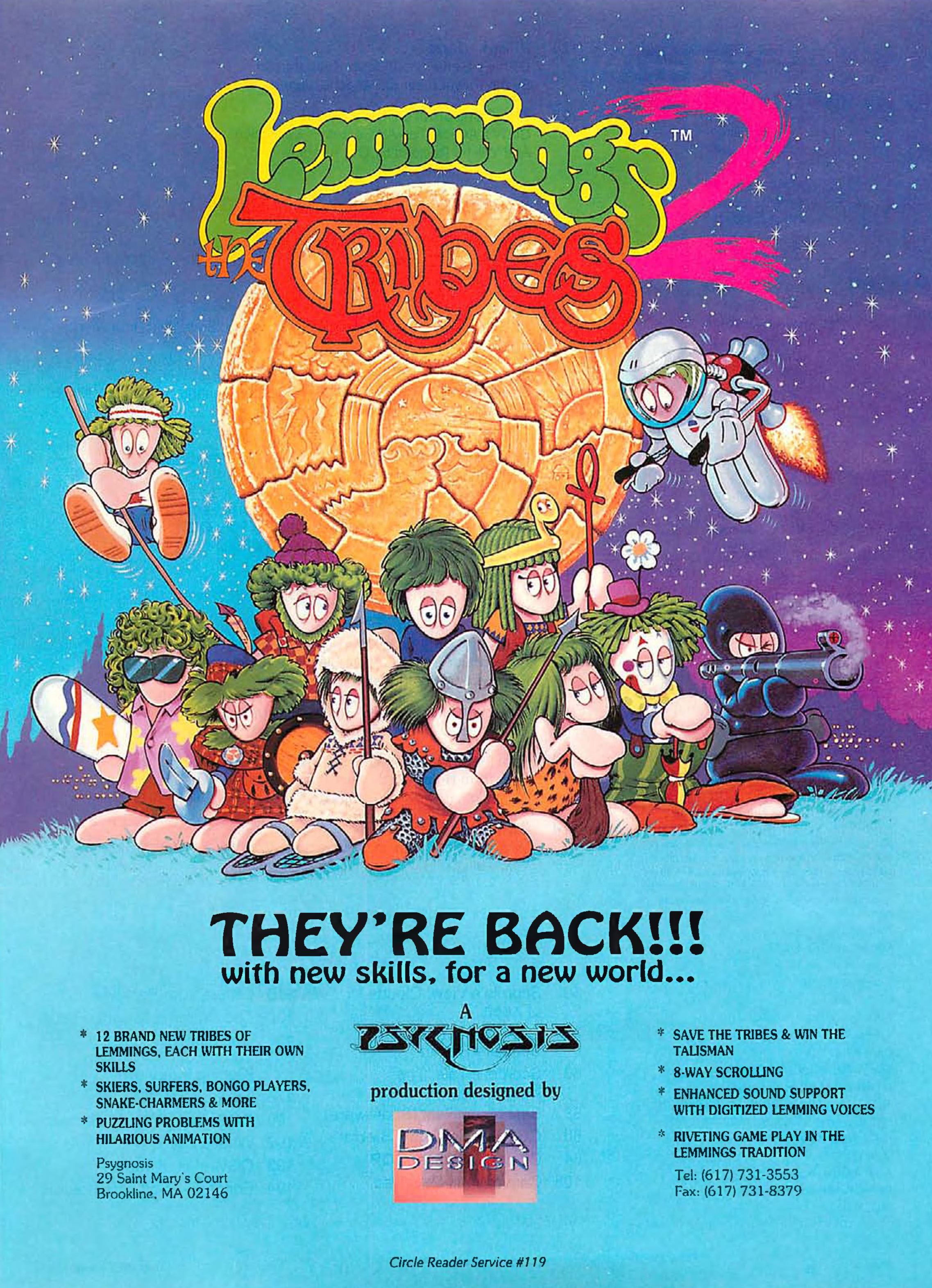
Figure 1: Computer Gaming World no. 102, p. 5
In this ad, cuteness manifests itself by the hypertrophied eyes, heads, hands, and feet. All of the limbs are drawn with the “O” shape that also came to be associated with the Disney Style. Although in this example the concept is only integrated visually, any textual mention of words such as “cute”, “chibi”, “kawaii” would be considered relevant and encoded. According to Paul’s account of discursive dynamics, children have become a major target audience since the rise of Nintendo in the American video game market, and it isn’t surprising to see marketers rely extensively on the cuteness frame at this time.
Bellicosity
Armed confrontation has been at the forefront of video game design since Spacewar! (Russell, 1962) and its numerous ports as arcade cabinets in the early 1970s. In the context of this repertoire, “bellicosity” refers to any visual or textual representation of violent combat or armed conflict. This concept encompasses many of the elements associated with the cultural paradigm of “militarized masculinity” as it was defined by the authors of Digital Play in 2003; along with the demographic analysis, it will allow us to document precisely the association with adolescent males. Ads considered as bellicose exhibit descriptions or depictions of street combat, realistic or fantasist military armament, combat vehicles, etc. For instance, the ad for Stonkers (Imagine, 1984; figure 2) displays most of these characteristics: tanks are pictured in the foreground, followed by armed soldiers. The title’s typography is also shaded with camo prints.

Figure 2: Computer and Video Games no. 27, p. 35
Early coding brought an interesting dilemma to the forefront: what about sporting competitions that might be considered violent to some extent, such as karate and football? Ads for realistic simulations have not been encoded with this frame even if they feature combat, but excluding sports video games altogether would be problematic considering that they often include elements of fantasy and violent scenarios, for instance Midway’s Mortal Kombat series or Speedball 2: Brutal Deluxe (Bitmap Brothers, 1990).
Hyperviolence
The creation of encompassing categories inevitably conceals some distinctions that could still be very relevant from a historical point of view. It is obvious that violence has not always been evoked with the same level of intensity in gaming culture. Any history of the medium highlights the rise of hyperviolent mechanics and imagery at the turn of the 1990s; even before the infamous id software games and Mortal Kombat, Taito and Namco pushed the envelope in the arcades with Ninja Warriors (1987) and Splatterhouse (1988) respectively. In this context, it appeared essential to have a tool that would allow us to monitor the rise of such a frame in printed ads. “Hyperviolence” refers to the presence of physical disintegration, either visually through the depiction of dismemberment, guts, and blood, or textually with explicit descriptions insisting on the exacerbated physical violence (for instance “deadly”, “bloody”, “mortal”, “annihilation”, “breaking bones”, etc.). Many of these elements can be seen in the Skull ad (Games Machine, 1984; figure 3); the very title seeks to put emphasis on the game’s hyperviolent nature.

Figure 3: Computer and Video Games no. 28, p. 155
To sum up, “bellicosity” and “hyperviolence” differ in the degree of violence displayed, the latter accentuating gruesome aspects. Such elements are put forward quite evidently in most of the cases, but “hyperviolence” can also loom in the description of a simple super hero game and even coexist with “cuteness”.
Damsel in distress
This frame refers to the depiction or the description of a captive and/or mistreated woman as a dramatic misdeed/motivation for the prospective player. Many recent contributions in game studies highlight this stereotypical role in gaming culture (Grimes, 2015; Miller and Summers, 2015; Kondrat, 2015, Kirkpatrick, 2015; Therrien, 2015). From folktales to classical Hollywood cinema, the damsel in distress has been very commonly used as a dramatic prop for the longest time, and this cultural pervasiveness becomes very obvious in the realm of video game advertisement. The arcade cabinet and promotional flyers for Donkey Kong (Nintendo, 1981) and for Jungle King (Taito, 1982) highlight these lineages: appropriating elements from King Kong and Tarzan respectively, they feature lightly dressed women in perilous situations. It can also be made explicit through textual descriptions: in the ad for Future Knight (Gremlin, 1986; figure 4), players are invited to rescue the “beautiful Amélie” that “has been seized by SPEBOLT the Terrible” (Tilt, no. 36, p. 73; freely translated).
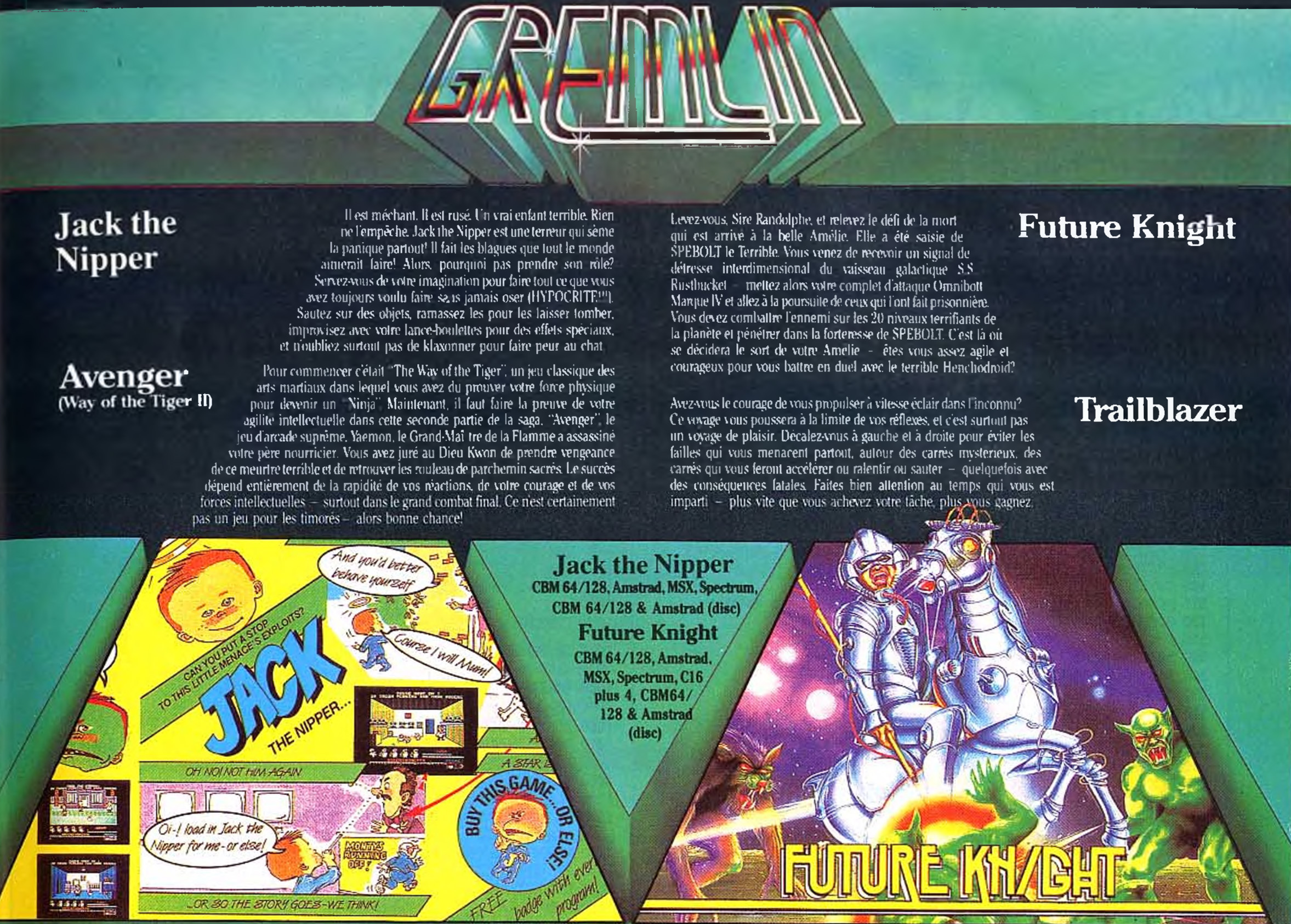
Figure 4: Tilt no. 36, p. 73 (fragment)
Sexualisation
This conceptual frame refers to any evocation of the female body in a sexually suggestive outfit and/or position. It could be said to be implicitly inscribed in the “damsel in distress” frame, since this plot device can be associated with the idea of sexual reward following a quest (Therrien, 2015). As Aspray and deB. Beaver reveal, the integration of women in computer advertising has often been connoted or explicitly associated with sex: “A frequent theme is that of the secretary being portrayed as having a love affair with her equipment, or with her boss”; “On a lower plane, office automation advertisements often include sexual innuendos in the attempt to sell products.” (1986:138). Jaakko Suominen also points out this tradition in Finnish computer culture in his paper “The Computer as a Tool for Love” (2012). The presence of female figures in suggestive positions is not always a clear indication that such elements will appear in the world of the game; the tradition of the sexy bystander or cheerleader has been long established in consumer society, and has been prolonged in the realm of arcade flyers (Therrien, 2015). In the U.S. ad for Captain Blood (Exxos, 1988) a sexy figure is presented in the intergalactic setting; not only was this figure not found in the original French ads, it is also largely absent from the game. There is no way for readers to be sure about the actual integration of such content, but since the ad plays on this assumption, it seems fair to encode all these occurrences as “sexualisation”. Metal & Lace (Megatech, 1993; figure 4) exhibits every aspect discussed in our definition: we can observe several images portraying denuded female body parts, and these bodies are presented in suggestive positions.

Figure 5: Computer Gaming World no. 113, p. 261
Moreover, if we linger on the textual description, we notice that sexual aspects of the game world are put forward (“It’s dream babes in heavy armor”; “you’ll both end up in less than full body dress”) and the target audience is clearly delineated (“with its intense violence and voluptuous women, Metal & Lace: Battle Of The Robo Babes is for mature audiences only”).
Power fantasy
One might wonder why “sexualisation” has been defined as a gender specific frame. While in theory some ads could be catering to females and others with sexy male figures, in practice it is very unlikely that the female demographic would be addressed in such a way. This is not to say that partially naked male bodies do not appear frequently in printed ads; quite the opposite, in fact. These bodies typically feature hypertrophied musculature. Considering the co-occurrence of other frames traditionally associated with a male target audience (bellicosity, hyperviolence and sexualisation of women), it appears safe to say that another logic is at play here: the hypermuscular figure is meant to communicate the potent nature of the protagonist that players are invited to control. Player empowerment is also commonly expressed textually, for instance with expressions like “masterful” and “legendary”, or by ensuring prospective users that they will prevail in the end. The notion of “power-up”, through explicit textual mentions or depictions of super powers, should also be associated with this frame. As an example, the Mag Max ad (Nihon Bussan, 1986; figure 6) exhibits most of these aspects: the avatar’s preeminent musculature is clearly visible as he shoots laser beams from its robotic hands. The textual description also supports the image by listing the characteristics of the playable character, that is “a robot filled with energy that transforms itself in a terrifying combat machine, able to overcome almost everything” (freely translated).

Figure 6: Tilt no 44, p. 97 (fragment)
In the context of consumer society as exposed by Baudrillard, and its underlying logic of protection and gratification, the omnipresence of frames such as “power fantasy” and “sexualisation” is not surprising. As we will see in the next section, players were not always addressed with such confidence and care in the world of gaming.
2.2 Experiential frames
The second category of frames encompasses qualifiers or visual elements in the printed ads that seek to convey a message about the nature of the game experience. In a sense, a diegetic frame such as “power fantasy” already makes a statement about the type of journey players will embark upon. The frames included in this section go one step further: they speak directly to prospective buyers about their expectations and relationship with the game.
Antagonization
In an arcade flyer for the Deluxe edition of Space Invaders (Midway, 1980) circulated in America, one can read: “One of the hottest games… now even more challenging!”. “Antagonization” can be defined as an overt challenge addressed at prospective players, either explicitly or through an emphasis on the game’s difficulty. This conceptual frame is mostly expressed textually, with phrases such as: “you cannot beat this game” or “can you face this impossible challenge?” The ad for Dominion (Mindcraft, unreleased) relies completely on this frame to attract potential players, specifically with the phrase: “How long can you survive in a constantly changing world of alliance and intrigue?” (figure 7).

Figure 7: Computer Gaming World no. 115, p. 77
Paradoxically, this frame could be related with the general idea of power fantasies. Brian Sutton-Smith highlights this common interplay in game culture, including in Huizinga’s classical account: “one of the strongest incentives to perfection, both individual and social, is the desire to be praised and honored for one’s excellence . . . Competition serves to give proof of superiority” (Huizinga, J. quoted by Sutton-Smith, B. 2001: 79). The gendered implications of power rhetorics are clear for the scholar: “Huizinga’s thesis is also a particularly agonistic and machismo view of play history. His definition of play primarily as contest reflects the widespread male rhetoric that favors the exaltation of combative power instead of speaking comprehensively about play itself” (2001: 79-80). Initial inspection of game marketing revealed that this type of taunting attitude was quite distinct from the other instances that we associated with power fantasies above. Moreover, Therrien has defended the hypothesis that the way players are addressed in game history evolved from an exacerbated sense of competition to the promotion of power fantasies (2014).
Accessibility
Beyond the rise of power fantasies in games and marketing, one can observe that another frame – more specifically experiential – represents a direct opposite to the taunting attitude outlined above: “accessibility”. This frame points towards the game’s ease of use, and is usually manifested textually through an emphasis on ergonomic controls, a lenient learning curve or the presence of adjustable / easy difficulty levels. It can also be communicated within phrases such as “everyone can do it”, or “family entertainment”. “Accessibility” can often coexist with “antagonization”, in formulations reminiscent of the “easy to learn, hard to master” design motto: “In Cyberstrike, all beginners will be treated fairly. And then destroyed”; “Cyberstrike is so easy to learn, you might actually live long enough to waste someone else first.” (Simutronics, 1994; figure 8). However, most of the textual description in this ad seeks to highlight the relative easiness of the experience, promising players that they can progress “without constantly dying”.

Figure 8: Computer Gaming World, no. 116, p. 23
This frame will allow us to document the actual rise of a more casual mode of address; while it seems clear that a paradigm shift officially occurred in the early 2000s (as Jesper Juul demonstrates in The Casual Revolution), recent contributions have pointed out how the shift might have occurred a long time before the advent of motion controls and music games (Lessard, 2014; Therrien, 2014).
Extrinsic motivation
In the world of game design, extrinsic vs. intrinsic motivation became a hot topic with the proliferation of virtual trophies and achievement systems on game networks such as Xbox Live. The resistance from designers towards these systems is easy to understand, since games have long been seen as a prime example of the captivating power of autotelic activities (Csikszentmihalyi, 1975). In “What Video Games Have to Teach Us about Learning and Literacy” (2003), James Paul Gee insists that “intrinsic rewards” are one of the most important motivators in ludic activities. However, historical inspection reveals that scoring systems have been the norm rather than the exception in sports and games, and that such reward systems points towards a social gratification outside of games, one that has been discussed above through Sutton-Smith’s analysis of power rhetorics. The “extrinsic motivation” frame will allow us to monitor to which extent video game marketing relies on the promise of such social gratification, through an emphasis on high scores / trophy systems, or the mention of national / international competitions. For instance, a game like Enduro (Activision, 1983; figure 9) invites players to perform and take a picture of their TV / score in order to take part in a contest (with the possibility to win a trip for two to Dakar, or one year of Activision games).

Figure 9: Tilt no. 8, p. 29
Immersion
Immersion is one of the most fundamental intrinsic pleasures associated with games or fictional worlds, and certainly one of the most discussed in spite of some controversy and debates about the concept and its implications.[12] As Kirkpatrick pointed out, the re-appropriation of the negative “addiction” stigma by journalists and players in the 1980s actually contributed to the construction of gamer identity (2015:87). In spite of some common distinctions between “types” or “levels” of immersion, we have decided to include in this frame any evocation of the strong sense of absorption (sportive, ludic, illusionary, narrative, etc.) felt by players during the experience. This frame has manifested itself visually as an illusion that jumps out of the TV screen, an interesting visual rhetoric that has been used extensively by Sega on its game boxes and by the ads for the 3DO console, for instance. It will more typically occur through direct textual mentions of terms such as “immersive”, “addictive”, or “virtual reality”. International Football (Teque Longon, 1988; figure 10) uses this conceptual frame by representing football players as playing outside the TV screen, while speed lines accentuates the idea of passing back and forth between the two realms. This rhetoric tries to appeal to potential players by insisting on the authentic feeling; the game is so well made (supposedly) that it almost eliminates the mediation of the TV screen.

Figure 10: Computer and Video Games no. 81, p. 23
Customization
The conceptual frame of “customization” highlights the possibility for the player to personalise content, or to “decide” how the stories play out in the context of interactive fiction / adventure games. As Baudrillard points out in Le système des objets, the rhetoric of customization is absolutely central in the logic of protection and gratification in consumer society; it is another expression of this implicit caretaking instance that constantly caters to our every need (1968: 236-38). According to Gilles Lipovetsky’s classic sociocritical essay on postmodern society (1983), we are largely submitted in such systems to the imperative of personalization. In the context of this repertoire, the frame encompasses any mention of customisation tools (from costume selection to level editors) or the possibility to navigate a branching story path. For instance, the ad for The Bard’s Tale Construction Set (Interplay, 1991) highlights the creative potential offered by the quest editor. The player can “design the dungeons” and “brand new monsters complete with eye-popping animations”. It is also interesting to notice that the ad only uses the pronoun “you” to address the player, therefore emphasizing the importance of the personalization of his creative experience.
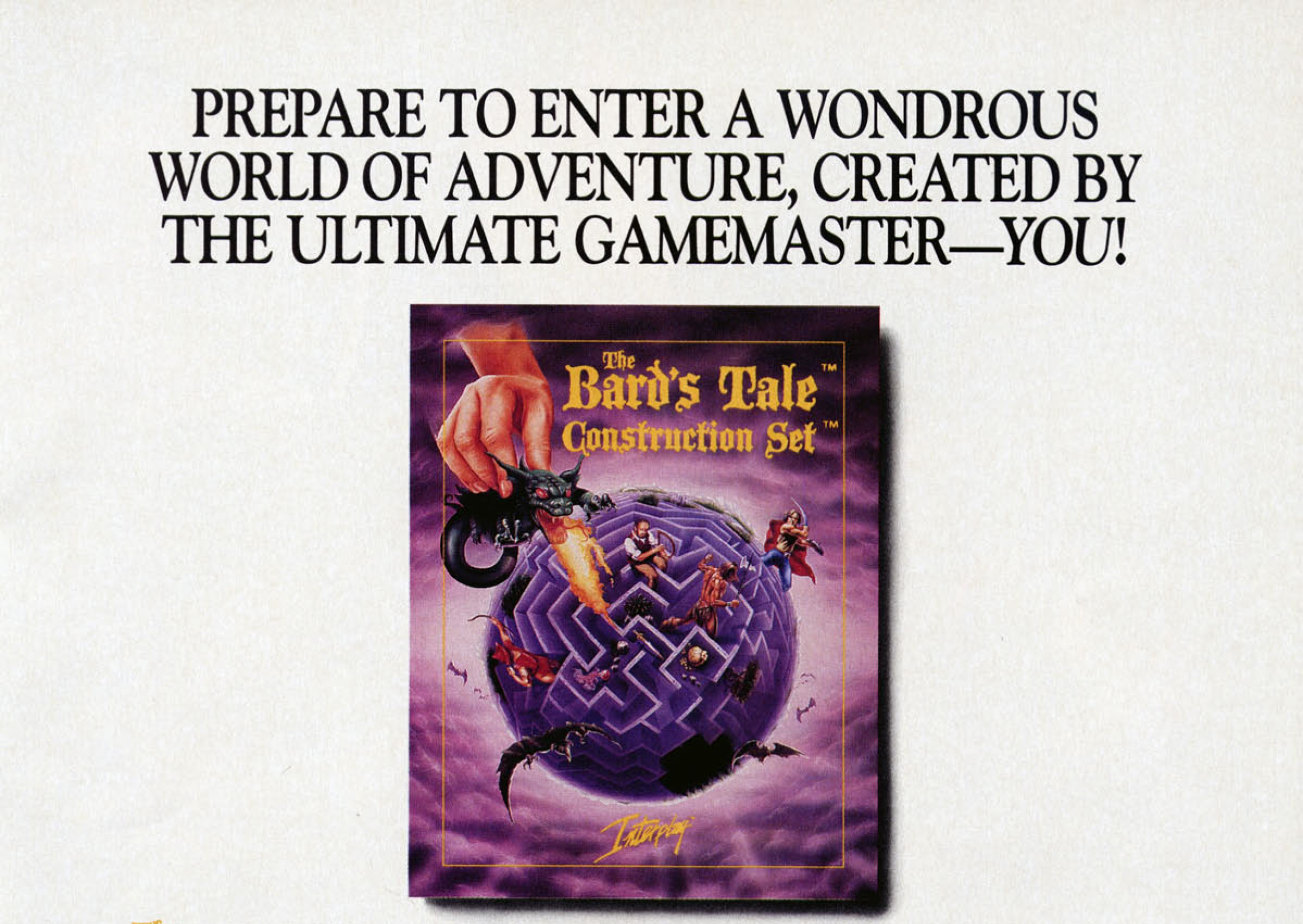
Figure 11: Computer Gaming World no. 88, p. 27 (fragment)
2.3 Historiographical frames
This final subsection introduces one last category of conceptual frames, one that is most significant to better understand certain storytelling patterns in video game history. Historiographical frames might evoke elements from the game world, and communicate something about the game experience, but they have been defined as such because their main intent is to situate the advertised game within the broader history of games. Since these frames can only be expressed in the restrictive context of a printed ad, the complexity of such historical elements is inevitably reduced and distorted by hyperbole. They become legend, and as Baudrillard points out (c.f. the opening quote), their appreciation and power in culture goes beyond the mere intention to sell a product.
Technological attraction
In an industrial context of perpetual innovation (Kline et al., 2003), leading to supersession and obsolescence (Newman, 2012), emerging out of the previous sector of “novelty games”, it is not surprising to see “technological attraction” emerge as one of the central marketing frames. Initial inspections of printed ads reveal that “hi-res” is one of the most pervasive expressions seen throughout the history of the medium. The integration of this frame seeks to help us delineate periods where new technology is seen as particularly desirable. Here, one has to be knowledgeable about a plethora of technological markers and their relative attractive power as a novelty in different eras, for instance: “3D”, “24 bit color”, “smooth scrolling”, “cunning AI”, etc. Usually, emphasis on technological elements is easy to observe. The Beach Head printed ad (Access, 1983; figure 12), for instance, brags about “Incredible 3D Graphics, unbelievable sound effects, multiple screens, high resolution scenario”. The fact that these characteristics are emphasized by the size of the typography also indicates the importance of this frame for the marketing discourse of the game.

Figure 12: Computer and Video Games no. 43, p. 69 (fragment)
Periodization
In the context of this repertoire, “periodization” turns out to be one of the most interesting frames to document. As a rhetorical strategy, the classic “old vs. new” antithesis has been discussed for the longest time, and again it is not surprising to see video game marketers rely on similar formulations. More specific, in the context of a constant innovation industry, is the emergence of expressions such as “the first of [any particular technological novelty]”. For example, Comanche Maximum Overkill (NovaLogic, 1992; figure 13) is said to offer: “Smoothest richest terrain graphics ever seen in a real-time simulator”, as well as the “First simulator with real-time controls of RAH-66 Comanche.”

Figure 13: Computer Gaming World no. 116, p. 12 (fragment)
Video game ads also commonly integrate concepts that strive to define broader periods in order to create a kind of historical euphoria. In this context, Sega’s “Welcome to the next level” is a clever pun which implies that the advertisers were “in” on the game. The biological metaphor of “generations” is less specific, but has been very prevalent in the history of computer technology as Aspray and deB. Beaver’s paper makes clear.[13] In “Enter the bit Wars: A Study of Marketing and Platform Crafting in the Wake of the TurboGrafx-16 Launch”, Therrien and Picard have exposed the problematic nature of the biological metaphor in the context of corporate “warfare”, and its convenience in the context of obsolescence capitalism (2015).`
Commercial attraction
This frame relies on the established commercial success of a game or a franchise to create excitement for the product. It can be seen as an economic incarnation of the common argumentum ad populum rhetorical strategy. Ads can be evasive and simply mention vague – and difficult to disprove – markers of success, such as “best-seller” or “#1 in the arcade”. Occasionally, sales figures might appear in the ads, but here again the veracity of these numbers are hard to prove. For example, an ad for Alone in the Dark’s rerelease on CD-ROM (Infogrames, 1993; figure 14) asserts that the previous version of the game was “America’s Favorite Virtual Adventure”. This phrase is also accentuated by its placement and the bold characters, which clearly indicates an intention to highlight its popularity.
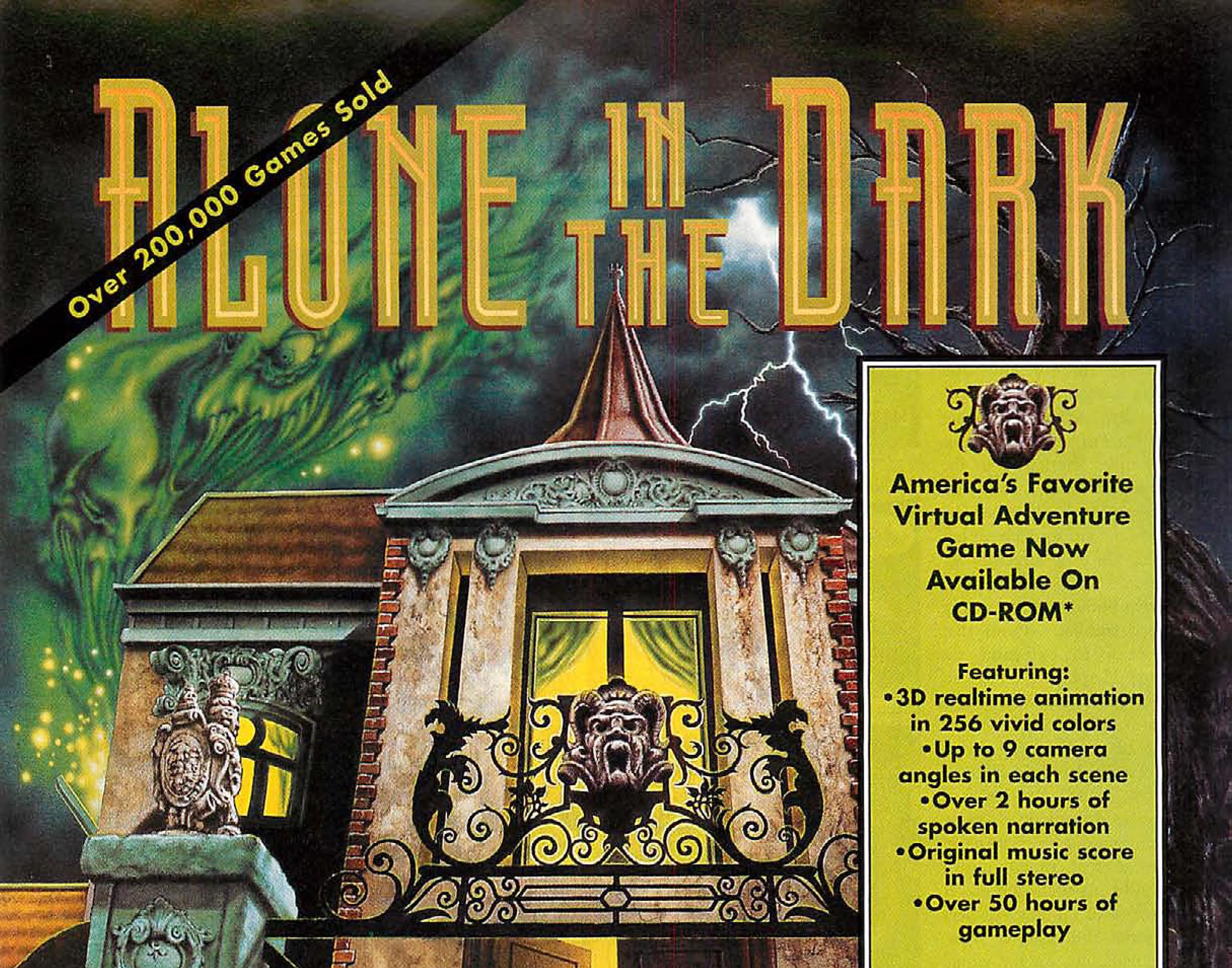
Figure 14: Computer Gaming World no. 114, p. 123 (fragment)
Industry and Press recognitions
These two frames highlight the development of cultural institutions that contribute to the legitimation of the medium: game industry lobbies such as the IGDA / ESA and tradeshow awards (e.g. CES, ETCS, E3, Indiecade, etc.) on one side, and the specialised press on the other. As we explained in the introduction of this paper, Kirkpatrick has built a very convincing case to highlight the role of journalists in the edification of the cultural appreciation of games, and the point here is not to invalidate such contributions. But it is essential to note that press recognitions are constantly used as a marketing prop, in a way that is very similar to the “badges” and “medals” created by industry groups themselves. While this project wouldn’t be able to decipher specific cases of problematic promiscuity between marketing departments and journalists, it will be useful to document which magazines are quoted most commonly by ads, and the ubiquity of this strategy. One ad for Doom (id, 1993, figure 15), for instance, relies heavily on the recognition received from the press; it quotes Computer Gaming World, PC Entertainment, and Electronic Games. Similarly, the ad for Titanic (R&R Software, 1984; figure 16) puts forth the “Action Prize” won by the game in the “Great International Contest of Adventure Software” (freely translated).

Figure 15: Computer Gaming World no. 117, p. iii (fragment)
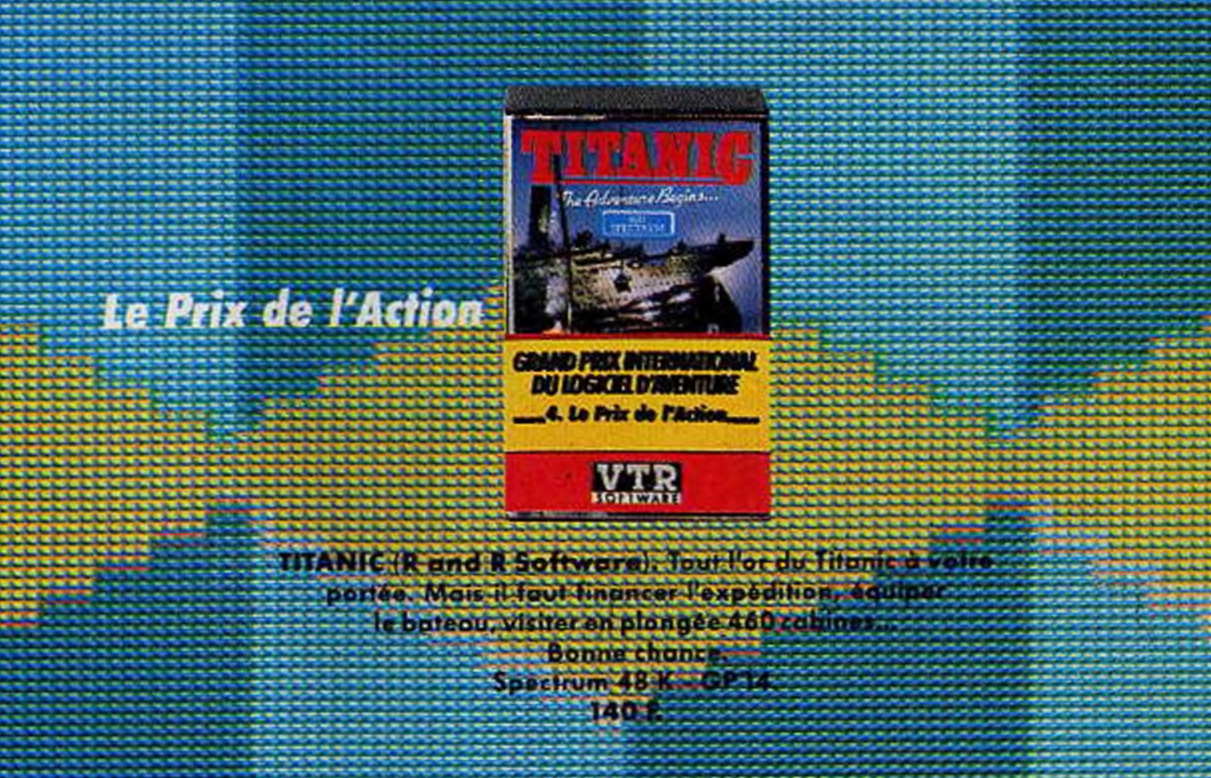
Figure 16: Tilt no. 13, p. 57 (fragment)
Creator’s notoriety
From Atari’s initial negation of authorship in their products to the foundation of studios such as Activision and Electronic Arts who celebrated game designers, the tensions around such figures in the game industry are well documented in journalistic accounts. Emphasis on auctorial figures was already common by the 1960s in the world of cinema, which might explain why many video game corporations had the idea to develop the “creator’s notoriety” strategy early on. This frame will allow us to gather data on such developments. For instance, the famous company known today as Cinemaware was first called Master Designer software, and the elaborate packaging for these games presented a picture of the game designer on the back. Similarly, an ad for Football Manager (Addictive games, 1981; figure 17) features both the mention “designed by Kevin Toms”, and a picture of the creator. As Dmitri Williams explained, the perception of video games in the generalist press appears to evolve positively along with the acknowledgement of artistry (2003:531).

Figure 17: Computer and Video Games no. 26, p. 86 (fragment)
Remediation
Adapted from Jay David Bolter and Richard Grusin’s seminal contribution (1999), this frame in the context of advertising seeks to highlight the game’s alleged power of remediation, within logics of both hypermediacy and immediacy. The former insists on a game’s ability to reproduce technological aspects or conventions of a previous medium, while the latter underlines the game’s role in moving the medium forward to a better stage in media history, or towards true artistic status. One ad for Flashback: The Quest for Identity (Delphine Software, 1992; figure 18) makes constant parallels with movies, and points out an alleged framerate of 24 images per second; such a rhetorical strategy occults the fact that tiled bitmaps and repetitive sprite-based movements are quite easily distinguishable from the cinematic aura that is evoked here. In the context of graphic adventure games, many ads integrated comic book inspired formatting or movie celluloid to frame screenshots of the game.
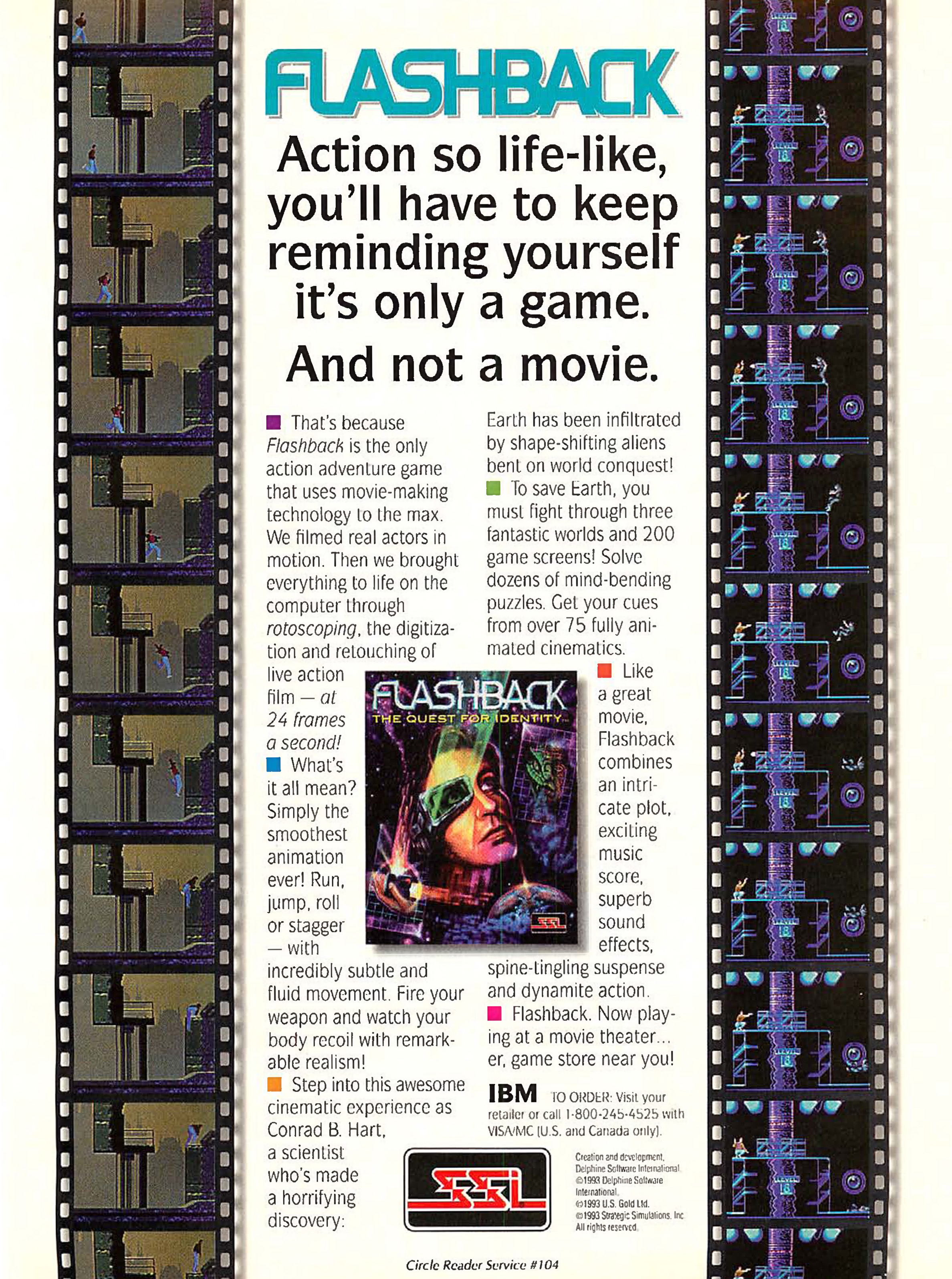
Figure 18: Computer Gaming World no. 107, p. 114
Conclusion: towards a statistical portrait of marketing in the history of video games
Ultimately, the goal of creating this repertoire of conceptual frames is to document the practice of marketing and its influence on gaming culture as a whole. In order to advance our understanding, all the ads encoded with this repertoire will also be analyzed with some fundamental demographic categories. This portrait will specify who is represented in the ads along basic distinctions of age, gender and ethnic groups. Since it is not always customary to represent the target audience directly (see Young, 2007), these categories will be encoded for depicted protagonists and other characters accentuated in the ad. Such a tool will allow us to see who is targeted at specific moments and inside specific cultures, and which frames are used to aim towards them. At the same time, the segmentation between diegetic / experiential / historiographical frames will allow us to monitor when these categories become more prevalent, and draw conclusions about various phases in marketing practice. As Young observes, depicting the audience and its experience was a common strategy in the early days of video game advertisement, while more recent ads try to represent the game world more directly (2007).
Many of the frames defined in this repertoire can be related to the cultural paradigm of militarised masculinity as defined by the authors of Digital Play (2003): sexualisation, bellicosity, hyperviolence and power fantasies often merge in the same ad, and proliferate in specific sociohistorical contexts. Furthermore, many of the experiential frames can be useful to monitor power rhetorics as defined by Sutton-Smith, sometimes in contradictory ways. Accessibility and customisation are likely becoming more prevalent in the marketed experience, catering to users in ways that traditional media could not dream of implementing. But as Baudrillard noted, there is a regressive aspect to this consumer culture that appears incompatible with the notion of “hardcore” empowerment; many players feed on the extrinsic motivation of social distinction through skillful mastery of the most difficult challenges or opponents. As Sutton-Smith observes, “[power rhetorics] are forms of propaganda forever « playing » about the ecstatic competitive ludic forms within the culture, forever displaying the fantasies, anxieties, and urges of those who are actually powerful about what the play culture should mean and how its members should behave.” (2001:85). The overall prevalence of antagonization in game ads and the privileged audience of such an address could be used to document this aspect of gaming culture. At the same time, the tool presented in this paper would allow us to monitor in which contexts these frames and targeted audiences become less prevalent.
It seems obvious that game ads set specific expectations about the upcoming game experience and who should be playing it. But as we’ve argued, the notion of epi/peri/paratext cannot do justice to the self-contained power these documents have acquired. They have the ability to substitute for the game experience itself – nobody plays all the games they hear about – and thus influence the perception of the medium as a whole to a great extent. They do not merely set the stage for game-related discourse among players and journalists; they reinforce specific conceptions about the history of video games itself. Marketing departments have tried to accentuate the place of their games in the bigger picture through historiographical frames such as technological attraction, creator notoriety and even periodization. In the end, the hundreds / thousands of ads consumed in and of themselves by members of the gaming community over their lifetime coalesce into the common video game legends we share collectively. In this process, what was meant as a framing device for an experience to be bought becomes the object of focus, and adds up to tell a story. As this paper suggests, now that we have a tool to monitor some of these frames, we can move towards a critical appreciation of how these legends are actually formed in the press.
Acknowledgments
The research leading to the results presented in this paper has been funded by the Fonds de Recherche du Québec – Société et Culture (FRQSC). The authors would also like to thank the LUDOV team for its precious feedback and support.
References
ARSENAULT D. (2017). Super Power, Spoony Bards, and Silverware. The Super Nintendo Entertainment System, Cambridge: The MIT Press.
ASPRAY W. & DE BEAVER D. (1986). “Marketing the Monster. Advertising Computer Technology”, Annals of the History of Computing, vol. 8, no 2 (April), p. 127-143.
BARTHES R. (1985 [1963]). “Le message publicitaire”, in L’aventure sémiologique, p. 243-48, Paris. Éditions du Seuil.
BAUDRILLARD J. (1968). Le système des objets. Paris. Gallimard.
BOGOST I. (2007). Persuasive Games: The Expressive Power of Videogames, Cambridge, Mass. The MIT Press.
CONSALVO M. (2017), “When paratexts become texts: de-centering the game-as-text”, Critical Studies in Media Communication, Vol. 34, no 2, pp. 177-183.
______ (2007), Cheating: Gaining Advantages in Videogames, Cambridge, Mass., The MIT Press.
CSIKSZENTMIHALYI M. (1975), Beyond Boredom and Anxiety. The Experience of Play in Work and Games, Washington : Jossey-Bass Publishers.
GEE J. P. (2003) What Video Games Have to Teach Us about Learning and Literacy, St. Martin’s Griffin.
GENETTE G. (2002), Seuils [1987], Paris, Seuil.
GRAINGE P. & JOHNSON C. (2015), Promotional Screen Industries, London, Routledge.
GRIMES S. M. (2015), « Rescue the Princess: The Videogame Princess as Prize, Parody, and Protagonist ». In Princess Cultures: Mediating Girls’ Imagniation & Identities. New York, Peter Lang.
HASEGAWA Y. (2002), “Post-identity Kawaii : commerce, gender and contemporary Japanese art”, in Lloyd, F. (ed.), Consuming bodies : sex and contemporary Japanese art, London. Reaktion Books.
JORGENSEN K. (2013), Gameworld Interfaces, Cambridge, The MIT Press.
KERNAN L. (2004), Coming Soon, Austin, University of Texas Press.
KIRKPATRICK G. (2015), The Formation of Gaming Culture: UK Gaming Magazines, 1981-1995, London, Palgrave Macmillan.
KLINE S., DYER-WHITEFORD N. & DE PEUTER G. (2003), Digital Play: The Interaction of Technology, Culture, and Marketing, Montréal, McGill-Queen’s University Press.
KONDRAT X. (2015), « Gender and video games: How is female gender generally represented in various genres of video games? » Journal of Comparative Research in Anthropology and Sociology, Vol. 6, No 1, p. 171-93.
LESSARD J. (2014), “The Casual Revolution of… 1987: Making adventure games accessible to the masses”, Proceedings from the History of Games International Conference, Montreal, online: < http://www.kinephanos.ca/2014/adventure-games/>
LIPOVETSKY G. (1983), L’ère du vide, Paris, Gallimard.
MILLER M. K. and A. SUMMERS (2007), « Gender Differences in Video Game Characters’ Roles, Appearances, and Attire as Portrayed in Video Game Magazines », Sex Roles Vol. 57, No 9-10, p. 733-42.
NEWMAN, J. (2012), Best Before: Videogames, Supersession, and Obsolescence, New York, Routledge.
PAUL C. A. (2012), Wordplay and the Discourse of Video Games: Analyzing Words, Design, and Play, New York, Routledge.
SALEN K. and E. ZIMMERMAN. Rules of Play: Game Design Fundamentals, Cambridge: The MIT Press.
STEINBERG M. (2012), Anime’s Media Mix: Franchising Toys and Characters in Japan, University of Minnesota Press.
STERCZEWSKI P. (2016), “Replaying the Lost Battles: The Experience of Failure in Polish History-Themed Board Games”, Kinephanos, Special Issue (April), p. 71-89.
STREET Z. (2013), “Adventure Dealers”, Memory Insufficient: Marketing in the Games History, vol. 1, no 8 (December), <https://issuu.com/zoyastreet/docs/memory-insufficient-marketing?e=9587246/13588012>.
SUTTON-SMITH B. (1997), The Ambiguity of Play, Cambridge, Mass., Harvard University Press.
THERRIEN C. (2015), “Death of the Gamer. Slaying Gendered Power Fantaisies in Legendary Axe II”, Well Played, special issue on diversity in games, p. 105-26.
______ (2014), “From the deceptively simple to the pleasurably complex. The rise of the cooperative address in video game design”, in H. Agius and M. Angelides (eds.), The Handbook of Digital Games, p. 548-74, IEEE Press.
THERRIEN C. & J. GOGGIN (2015), “Welcome to the Dollhouse. Constructing Bodies in Crytek’s Crysis and Mattel’s Kiddle Dolls, Kinephanos, special issue “Exploring the Frontiers of Digital Gaming: Traditional Games, Expressive Games, Pervasive Games”, online : < http://www.kinephanos.ca/2016/welcome-to-the-dollhouse/>
WILLIAMS D. (2003), “The Video Game Lightning Rod: Constructions of a New Media Technology, 1970-2000”, Information, Communication and Society, vol. 6, no 4, p. 523-550.
YOUNG B.M., (2007). “The Disappearance and Reappearance and Disappearance of the Player in Videogame Advertising”, Situated Play DiGRA 2007 Conference, The University of Tokyo, September.
Carl Therrien is professor in game studies at Université de Montréal and co-director of LUDOV. He co-founded the first international conference on the History of Games, and of the Game History Annual Symposium in Montreal. In 2010, he completed a Ph. D. thesis about the formal and psychological aspects of immersion in fictional worlds. He recently completed the first phase of a research project on the history of video games, and has published extensively on the topic of critical historiography of games.
Isabelle Lefebvre is a Ph.D. candidate in Film Studies in the Department of Art History and Film Studies at Université de Montréal. Her doctoral research focusses on studying the processes of normalization and socialization surrounding amateurs’ creative production within three practices: level editing, modding, and demo creation (demoscene).
Notes
[1] All quotes from French sources in this paper have been freely translated by the authors. The original quotes will be presented in footnotes. “Les signes publicitaires nous parlent des objets, mais sans les expliquer en vue d’une praxis (ou très peu) : en fait, ils renvoient aux objets réels comme à un monde absent. Ils sont littéralement « légende », c’est-à-dire qu’ils sont d’abord là pour être lus”.
[2] “ensemble hétéroclite de pratiques et de discours de toutes sortes et de tous les âges”
[3] “entre texte et hors-texte, une zone non-seulement de transition, mais de transaction: lieu privilégié d’une pragmatique et d’une stratégie, d’une action sur un public au service […] d’un meilleur accueil du texte et d’une lecture plus pertinente – plus pertinente s’entend, aux yeux de l’auteur et de ses alliés”
[4] As with books or domestic movie distribution, video game marketing occurs both at the peritextual and epitextual levels. Even though we won’t analyze game boxes extensively in the context of this paper, it is interesting to note that both levels frequently use the same textual/visual elements.
[5] “n’engage pas toujours de manière très significative la responsabilité de l’auteur, qui se borne le plus souvent à fermer officiellement les yeux sur des hyperboles valorisantes liées aux nécessités du commerce”
[6] « le premier message sert plus subtilement à naturaliser le second : il lui ôte sa finalité intéressée, la gratuité de son affirmation, la raideur de sa commination; à la banale invitation (achetez), il substitue le spectacle d’un monde où il est naturel d’acheter ». In French, “commination” refers to a classical rhetorical figure defined by the alarming or intimidating nature of a message that seeks to modify the behavior of the addressees.
[7] « l’injonction et la persuasion soulèvent toutes sortes de contre-motivations et de résistances […], le discours publicitaire dissuade autant qu’il persuade et il semble que le consommateur soit, sinon immunisé, du moins un usager assez libre du message publicitaire »
[8] « D’où l’efficacité très réelle de la publicité, selon une logique qui, pour n’être pas celle du conditionnement-réflexe, n’en est pas moins très rigoureuse : logique de la croyance et de la régression »
[9] « la publicité est d’abord consommée plutôt qu’elle ne dirige la consommation »
[10] Paul’s observations echo those put forward in Digital Play, which features a chapter on the formation of the « Nintendo generation » (2003).
[11] “Finally, there is the problem of multiple thematic content. We found in choosing ads to illustrate this paper that we could often use the same ad to illustrate a dozen themes” (1986:129)
[12] Already in 2003, Katie Salen and Eric Zimmerman speak of the “immersive fallacy” to point out the problems with definitions of the concept centered on realism and perceptual duplicity (2004:451). Kristine Jorgensen’s recent study of interface design in video games proposes a similar critique throughout. (2013).
[13] The authors expose a periodization of four technological generations that is commonly accepted at the time. One of their contributions in this paper is to propose a periodization of computer marketing in three generations that is not based solely on technological criteria but on social perceptions of the computer (1986:130)
